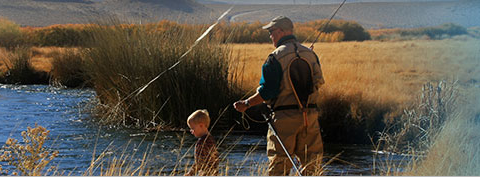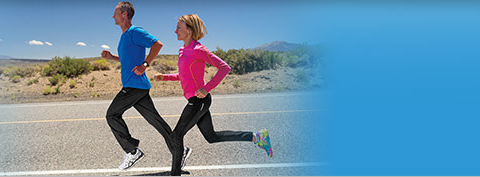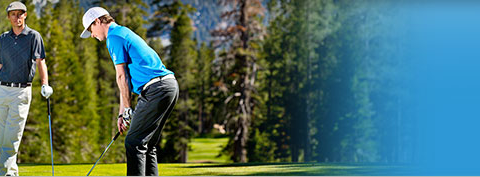Anterior Cruciate Ligament Tear
The anterior cruciate ligament, or ACL, is one of the major ligaments of the knee that is located in the middle of the knee and runs from the femur (thigh bone) to the tibia (shin bone). It prevents the tibia from sliding out in front of the femur. Together with posterior cruciate ligament (PCL) it provides rotational stability to the knee.
An ACL injury is a sports related injury that occurs when the knee is forcefully twisted or buckles under intense pressure. An ACL tear usually occurs with an abrupt directional change with the foot fixed on the ground or when the deceleration force crosses the knee. Changing direction rapidly, stopping suddenly, slowing down while running, landing from a jump incorrectly, and direct contact or collision, such as a football tackle can also cause injury to the ACL.
When you injure your ACL, you might hear a “popping” sound and you may feel as though the knee has given out. Within the first two hours after injury, your knee will usually swell and you may have a buckling sensation in the knee during twisting movements.
Diagnosis of an ACL tear is made by knowing your symptoms, medical history, performing a physical examination of the knee, and performing other diagnostic tests such as X-rays, MRI scans, stress tests of the ligament, and arthroscopy.
Treatment options include both non-surgical and surgical methods. If the overall stability of the knee is intact, your doctor may recommend nonsurgical methods. Non-surgical treatment consists of rest, ice, compression, and elevation (RICE protocol); all assist in controlling pain and swelling. Physical therapy may be recommended to improve knee motion and strength. A knee brace may be needed to help immobilize your knee.
Young athletes involved in pivoting sports will most likely require surgery to safely return to sports. The usual surgery for an ACL tear is an ACL reconstruction which tightens your knee and restores its stability. Surgery to reconstruct an ACL is done with an arthroscope using small incisions. Your doctor will replace the torn ligament with a tissue graft that can be obtained from your knee or from a cadaver. Following ACL reconstruction, a rehabilitation program is started to help you to resume a wider range of activities.
Keeping your ACL – even after its torn!
Joint preservation at MOI also includes ligament preservation.
Often when you hear people say that they tore their ACL and had it repaired, they probably mean that they had an ACL reconstruction. ACL reconstruction is one of the most common procedures in the United States today. Reconstruction means that the native ligament is removed and replaced by a graft which then in turn undergoes a process of ligamentization. Repair means that the native tissue is restored back to its location and allowed to heal.
Because in the case of reconstruction the body must heal and replace the graft and convert it into a ligament, the recovery and rehabilitation are long. While it remains an area of great controversy as to when a patient can return to sports after an ACL reconstruction, the rate of reinjury after ACL reconstruction decreases when return to sport is delayed until 1 year after surgery. Because ACL repair only involves healing the part of the tendon that was torn, the recovery time is much faster, perhaps as much as half the time for reconstruction or 6 months.
Because ACL repair has been largely abandoned for the last few decades, there is not a great deal of literature to help surgeons know for certain at this time when these patients can return to sport.
So why would anyone want to have a reconstruction? The answer is complicated and part of the history of treating ACL injuries. Long before arthroscopy and before the widespread use of magnetic resonance imaging, or MRI, the diagnosis of ACL injury was based on physical examination alone. A skilled orthopedist can tell if an ACL is functioning or not by performing a series of tests on the knee to determine if it is rotating, or pivoting, or translating (sliding) abnormally.
Early attempts to repair the ligament surgically met with success in some cases but the success rate was highly unpredictable and so eventually the procedure was gradually abandoned and surgeons turned to reconstruction as a more reliable and consistent means of treating these injuries.
ACL reconstruction has not changed much in the last 40 years. Surgeons debate the location for the tunnels and use different techniques and grafts, but the principles remain. Interestingly, since the widespread use of MRI and the development of minimally invasive techniques such as arthroscopy surgeons are able to get more information preoperatively.
ACL injuries are not all the same. The ligament can tear from the femur (thigh bone), from the tibia (leg bone) or in the middle. They can tear off the bone or with a piece of bone attached. It can tear just slightly or be completely frayed within the fibers. Injuries can be partial or complete. There can be injury to one bundle of fibers or both. They can be new (acute) or old (chronic). They can be associated with other problems in the knee or occur in isolation. They can occur from car accidents or from falls in a parking lot or on the soccer field. They happen to people young and old without discrimination. Despite all of these variables, to a large extent they are all treated exactly the same.
Since surgeons have become better at diagnosing and understanding these unique factors there has been some renewed interest in ACL repair. After all, not all of the ACL repairs from the past failed, but some did, and at the time we did not have a good way of knowing ahead of surgery which factors a patient had that might make a repair more likely to succeed or fail.
At MOI, we have found with careful patient selection and preoperative planning and discussion with our patients that some ACL tears can be treated with ACL repair. In general, recent injuries, that were lower energy, without other ligamentous injuries in the knee, which have good tissue quality and tear directly off the femur, are potential candidates for ACL repair, and we have had early success in treating these types of injury patterns in patients whom understand the procedure and are willing to comply with the rehabilitation.
Compared to ACL reconstruction, these patients have less pain, smaller incisions, better early range of motion and function, and a shorter overall recovery time. For more information about ACL repair at MOI please see www.mammothortho.com.
Patients remote from Mammoth are encouraged to contact our office and send their MRI for evaluation. In many cases information can be reviewed prior to traveling to Mammoth Lakes for consultation.
To send your MRI to us for a consult please obtain a CD with all of your images on it. This should include any x-rays, MRIs, CTs, etc. that you have had related to your affected body part within the last year. It is best to obtain the disc and mail it yourself instead of asking your healthcare provider/facility to mail it. Priority mail will generally arrive at our office within one to two days from anywhere in California or neighboring states. Standard mail will generally arrive around 4 days. Please add extra padding to the package and mail to:
PO Box 660
Attn: MOI Surgical Consult
Mammoth Lakes, CA 93546
If you have not heard from us within 48 hours of the day we should have received your disc please call our main office at 760-924-4084.





















